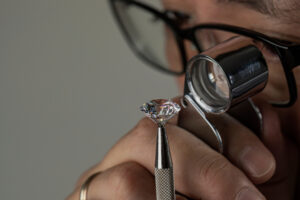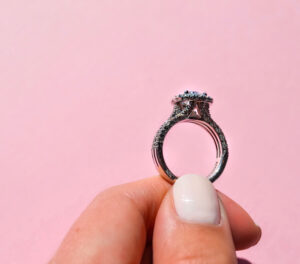
Diamonds have traditionally represented wealth, style, and status. However, since they are so uncommon and pricey, real diamonds are out of reach for the majority of people. As a result, artificial diamonds were created, which are far more affordable and have the same physical and chemical characteristics as real diamonds. Additionally, the creation of synthetic diamonds has offered a variety of color options that are not generally available in genuine diamonds. A broad variety of colors, including yellow, blue, green, pink, red, and even black, can be used to create artificial diamonds.
The chemical impurities found in the diamond’s crystal lattice determine the color of an artificial diamond. For instance, impurities of nitrogen result in yellow diamonds, whereas impurities of boron yield blue diamonds. By adding various kinds and concentrations of impurities throughout the creation process, artificial diamonds may be created in a variety of colors.
Yellow Diamonds
One most popular shades of synthetic diamonds is yellow. The atoms of nitrogen in the diamond’s lattice framework are what give it its color. Additionally, the nitrogen content makes the diamond much more malleable than other diamonds, which increases its susceptibility to nicks and scratches. However, yellow diamonds are quite valuable and have obvious beauty.
Blue Diamonds
One of the most uncommon shades of diamond, both naturally occurring and created, is blue. The boron imperfections in the diamond’s lattice structure are what give it its blue hue. Due to their rarity and great value, blue diamonds are highly sought.
Green Diamonds
The rarity and worth of green diamonds are quite high. They are created when the diamond’s crystal lattice structure is altered during creation by natural radiation. Because of this change, the diamond has nitrogen impurities in some places, giving it a green tint. Irradiating the manufacturing process allows for the creation of artificial green diamonds.
Pink Diamonds
Some of the most costly and sought-after diamonds in the world are pink ones. The absorption of green light and the reflection of pink light are brought on by deformation in the diamond’s lattice structure during its creation. Adding nitrogen impurities to the manufacturing process allows for the creation of synthetic pink diamonds.
Red Diamonds

The world’s rarest and most expensive diamonds are red ones. They occur from deformations in the lattice structure of the diamond during its production, which absorbs green light and reflects red light. Artificial red diamonds are still in the experimental stage and are extremely difficult to make.
Black Diamonds
Technically speaking, black diamonds aren’t really black; rather, they have multiple inclusions that have disrupted the diamond’s lattice structure. Most of the light is absorbed by these inclusions, giving the material a black or dark gray color. Graphite or other impurities can be added to the production process to create synthetic black diamonds.
